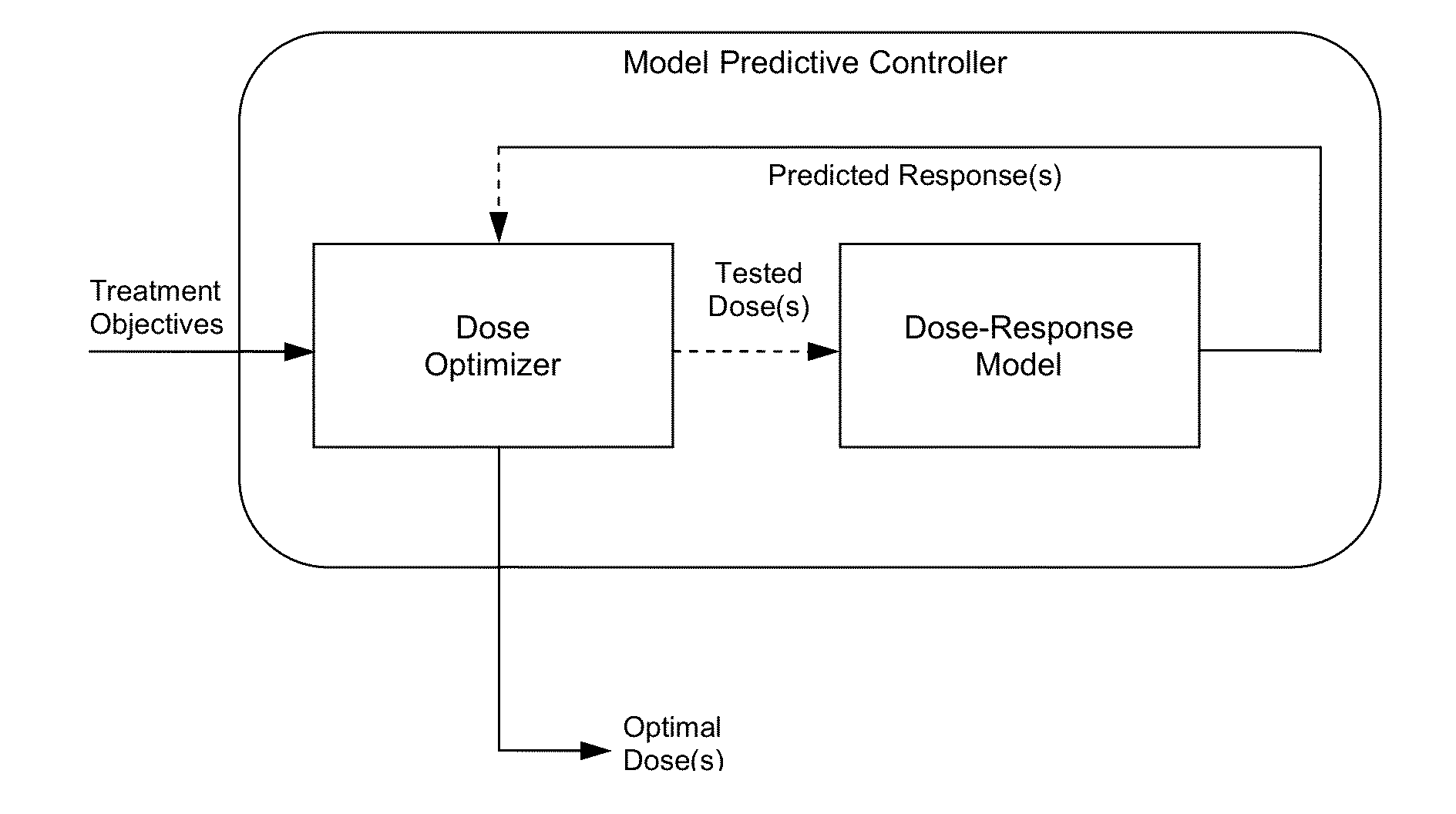System and method for personalized dosing of pharmacologic agents
a technology of pharmacologic agents and personalized dosing, applied in the field of personalized dosing system and method of pharmacologic agents, can solve the problems of increased risk of adverse events and adverse outcomes
- Summary
- Abstract
- Description
- Claims
- Application Information
AI Technical Summary
Benefits of technology
Problems solved by technology
Method used
Image
Examples
example 1
Analysis of Hemoglobin Control and Cost Savings
[0249]To analyze the ability of the presently-disclosed system and method for personalized Epo dosing to control hemoglobin level, and the cost of administering Epo, a retrospective controlled clinical trial of the system and method for “smart anemia management” or “SAM” (n=68) versus a traditional algorithmic approach (“TAP”) (n=66) was conducted in a dialysis facility for 6 months prior to the introduction of SAM to the 6 months after SAM and between TAP and SAM. The SAM program was implemented as a standalone program that read EPO dose and hemoglobin data from an electronic medical record. It then determined the best subject-specific future dose of EPO based on the model predictive control algorithm described herein above. The TAP was developed as an expert system based on the EPO package insert and KDOQI guidelines. The target Hb was 11.0 g / dl in both groups, and the mean Hb and weekly EPO dose was measured.
[0250]Shown below in Tabl...
example 2
Validation of System and Method for Anemia Management
[0251]To further assess the presently-disclosed system and method for managing anemia, the system and method for individualized Epo dosing or “SAM” was compared against two standard protocols through in silico simulation. Briefly, in this analysis, end-stage renal disease (ESRD) subjects were represented with a mathematical model of erythropoiesis relating weekly Hb to weekly Epo dose received. To account for inter-subject variation in Epo response, a pool of models was created with different (fixed) parameters including Epo sensitivity from 0.1 to 0.9 g / dL per 1,000 ESA Units per week, RBC lifespan between 60 and 120 days, body mass 50 to 150 kg, and baseline Hb 7 to 9 g / dL. Infra-subject Hb variability was represented by normally distributed random noise with zero mean and standard deviation 0.0 to 1.0 g / dL. All the simulation parameters other than Hb, Epo dose and body mass were not visible to SAM nor the benchmark protocols. H...
example 3
Assessment of Computer-Aided Personalized Anemia Management
[0253]To also assess the ability of the presently-disclosed computer-aided personalized anemia management systems and methods or “SAM” to effectively manage Epo dosing, additional in silico testing was performed. Briefly, in these additional experiments and using data from ESRD subjects receiving Epoetin alfa (Epo), three models representing typical pharmacodynamic (PD) Hemoglobin (Hb) response to Epo were developed: hypo-, average, and hyper-responder. PD characteristics were represented by erythropoietic sensitivity (0.05, 0.25, and 1.0 g / dL per 1000 U / wk) and average erythrocyte lifespan (60, 90, 120 days). Using the three response models, anemia management was simulated over a period of 37 weeks starting at baseline Hb=8 g / dL. SAM drove Hb from the baseline value to the target range (10-12 g / dL) for all three test subjects. The time to reach the target range was 23 (hypo-), 14 (average), and 7 (hyper-responder) weeks. Th...
PUM
 Login to View More
Login to View More Abstract
Description
Claims
Application Information
 Login to View More
Login to View More - R&D
- Intellectual Property
- Life Sciences
- Materials
- Tech Scout
- Unparalleled Data Quality
- Higher Quality Content
- 60% Fewer Hallucinations
Browse by: Latest US Patents, China's latest patents, Technical Efficacy Thesaurus, Application Domain, Technology Topic, Popular Technical Reports.
© 2025 PatSnap. All rights reserved.Legal|Privacy policy|Modern Slavery Act Transparency Statement|Sitemap|About US| Contact US: help@patsnap.com



